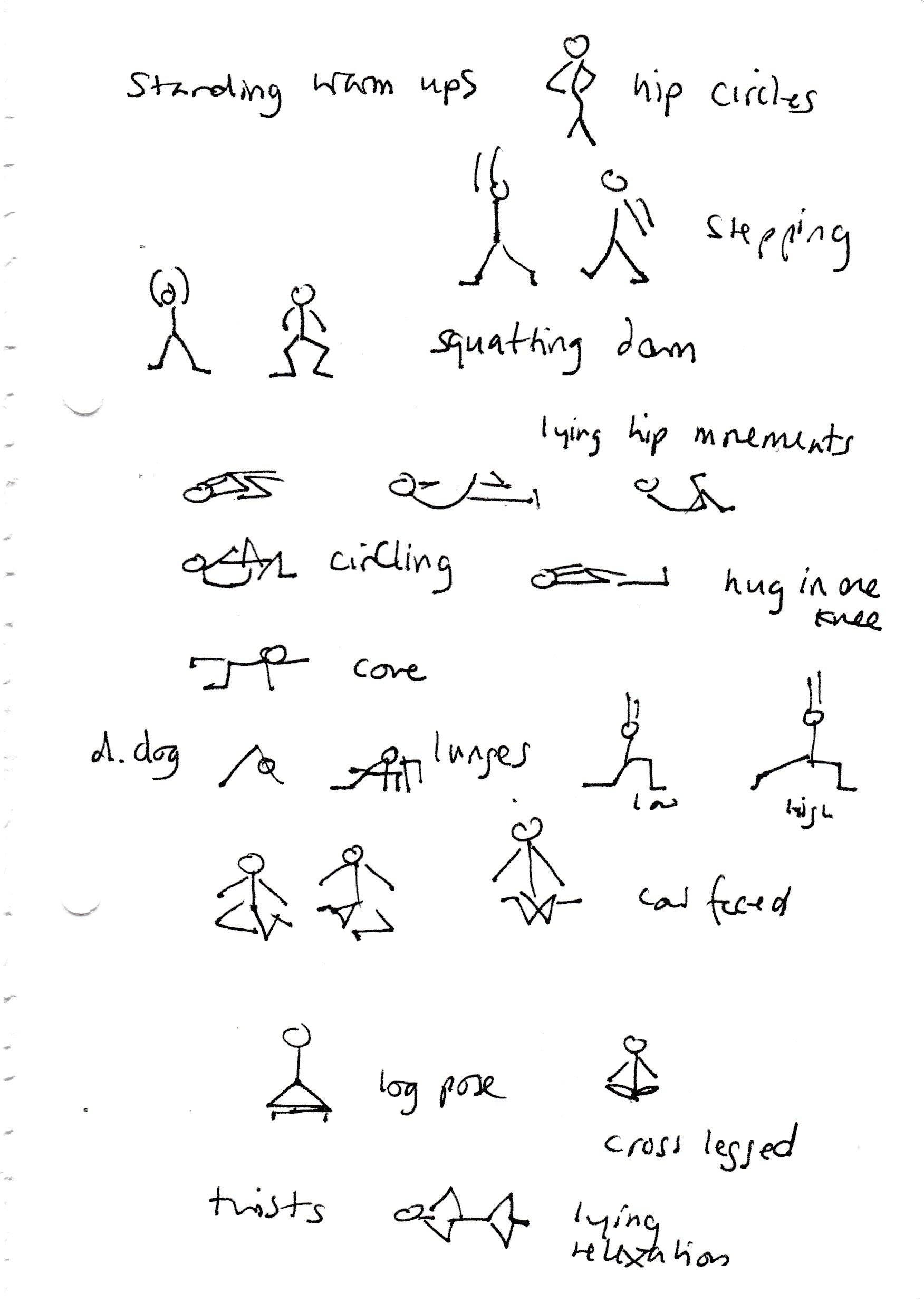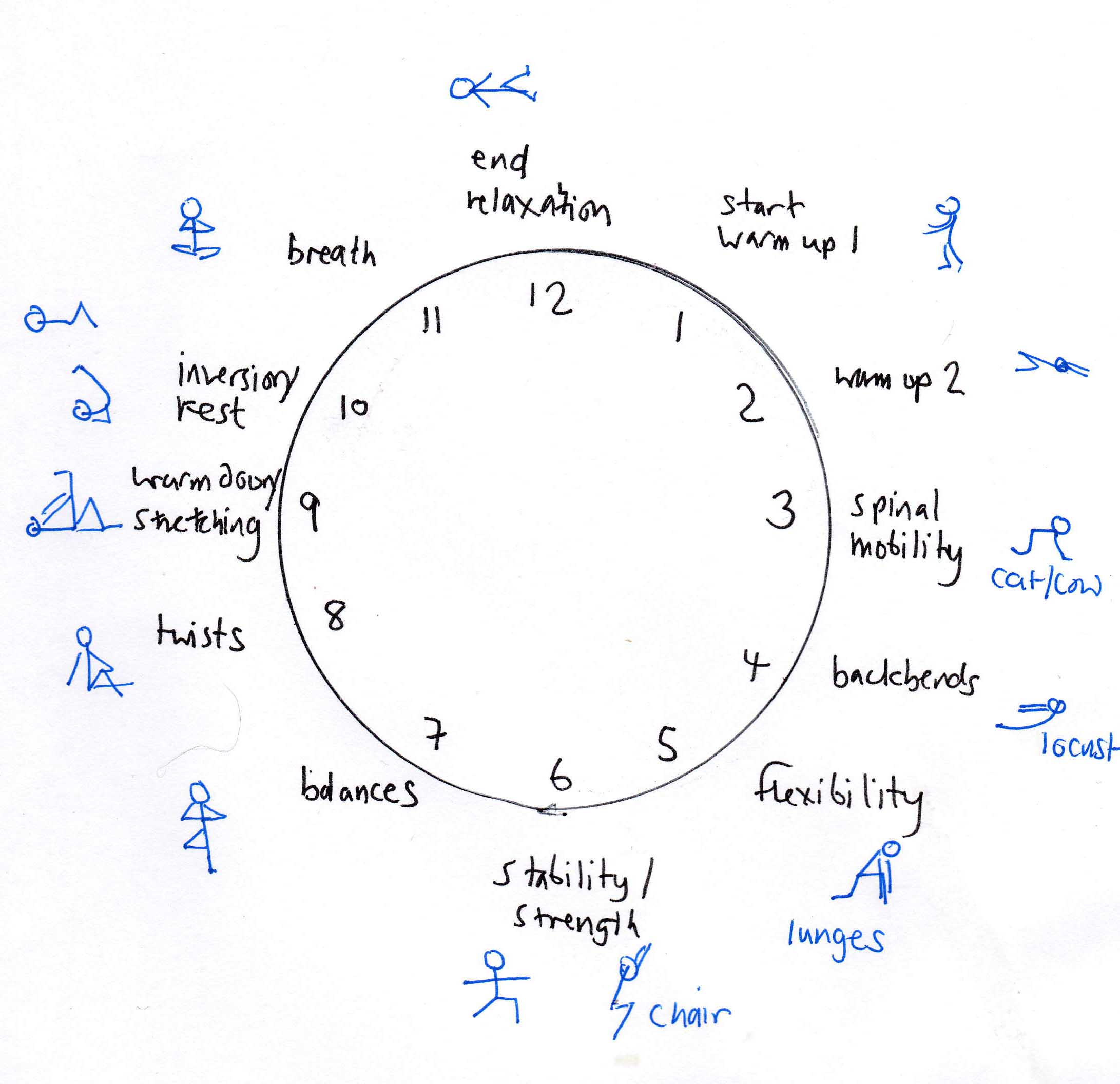Published: Feb 24, 2018 by Lucy Tennyson
The hip is a ball and socket joint, allowing us to move the leg freely in all directions. It needs to do many things, keeping the body stable and strong when walking and running, at the same time being flexible enough to allow us to sit down on the floor cross legged.
Sitting for hours a day on a chair or sofa with the legs bent is likely, over time, to cause the hip flexors to shorten and become tight. This can have a knock on effect on the muscles in the lower back and lead not only to bad posture, but back ache.
The hip opening postures we practised this week will go a long way towards reversing the effects of sitting down. But if you want to do some at home, take your time as the hip ligaments and muscles are strong (they need to be to maintain stability). Warm up carefully, and don’t push yourself: begin with gentle stretches and work with the breath, trying to soften into each posture.
This week, we worked first mobilising the joints and warming the muscles, and then on toning up our abdominals which play key role in maintaining core stability.
Hip opening postures to try include lunges, standing warrior poses, cow face pose and pigeon. Here is a reminder of some of this week’s sequence. Don’t forget to warm down afterwards with seated twists and lying down knee hugs and happy baby.

